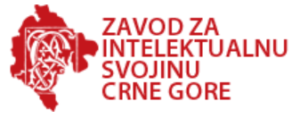 How does one obtain patent protection in Montenegro through the PCT? This turns out to be a very interesting question.
How does one obtain patent protection in Montenegro through the PCT? This turns out to be a very interesting question.
A bit of background will help, before I discuss Montenegro in particular.
By way of one example, how does one obtain patent protection in France through the PCT? The answer is, one does it through the EPO. France has “closed the national route”, meaning that there is not a DO/EO/FR. If one wishes to obtain patent protection in France through the PCT, the only available path is to enter the European regional phase and then follow the steps within the EPO process to perfect patent protection in France.
France is not the only country that has this situation. The same is true for eleven other Offices in Europe, including Italy and Belgium. (WIPO has a very helpful page that explains this.) There is thus no DO/EO/IT and there is no DO/EO/BE, for example. The reason that this works is that France (and Italy, and Belgium, and others) are full member states of the European Patent Convention.
Montenegro is not a full member state of the European Patent Convention. Montenegro is an “extension state”. (Other extension states with EPO include Bosnia and Herzegovina, Morocco, and Republic of Moldova.) Said in a different way, the Montenegrin Office has an extension agreement (see https://www.epo.org/about-us/foundation/extension-states.html and https://www.epo.org/law-practice/legal-texts/official-journal/2016/etc/se4/p547.html), meaning that the effect of a European patent, once granted, can be extended to the territory of Montenegro even though it is not yet a full member state of the European Patent Convention.
Now with this background, let’s return to the question of how an applicant might obtain patent protection in Montenegro from the PCT.
In theory one can, according to the PCT, present national-phase-entry papers to DO/EO/ME (the Montenegrin Office as designated Office). My impression, however, is that the Montenegrin Office has indicated a strong preference to have applicants seeking patent protection in Montenegro to do that via the EPO.
In practice these would be the steps:
- The applicant would enter the regional phase before the EPO;
- Extension of the European patent to Montenegro is deemed to be requested in any PCT application filed on or after 1 March 2010;
- An extension fee would need to be paid to the EPO within the period for performing the acts required for entry into the EP regional phase;
- The substantive examination of the application will be performed by the EPO up to and including the decision to grant or refuse, and the Montenegro Office will accept that decision;
- Montenegro will publish in its national register the relevant data about the granted European patent extended to its territory.
My impression is that it is the intention of the Office of Montenegro, once it has become a full EPC Contracting State, to “close its national route” under the PCT (see PCT Article 45(2)), and the extension agreement would appear to be, effectively, an interim step in that direction.
At such time as Montenegro were to become a full EPC Contracting State, and at such time as Montenegro were to “close its national route”, Montenegro would have followed in the footsteps of France and Italy and Belgium and quite a few other states that have “closed their national route”.

Hi Carl, just wanted to point out there appears to be a typo in the third paragraph of this post. I believe you intended to reference DO/EO/BE, and not DO/EO/BR.
Best,
Dan
Thank you! I have corrected the typo. This is very helpful.
Carl
Carl,
It may interest some readers to know that you also can get an extension/validation of the European patent for Hong Kong. I think this is based on its former connection to the UK.
Also, technically, Morocco, Tunisia and Moldova are ‘validation’ states rather than ‘extension’ states. I think the difference is largely academic: extension states are contracting states which haven’t yet completed the process of becoming part of the EPC but have agreements (which expire when they join) in place to recognize its patents, whereas validation states are not applying, and they’re primarily outside of Europe (Moldova, e.g., was one of the SSR’s that is NOT included in the EAPO).
Here’s a very helpful map: http://documents.epo.org/projects/babylon/eponet.nsf/0/8C003885190F73D2C1257EEE002E4EBB/$File/coverage_of_european_patents_map_as_of_1.12.2017_en.jpg
Guy Manning
Fort Worth
Your analysis was recently fully confirmed by WIPO in Practical Advice 01/2019.